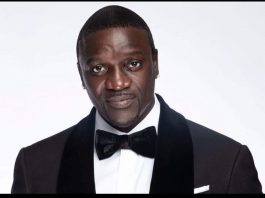Mary Sibande is a contemporary South African visual artist born in 1982 in Barberton in Mpumalanga, a province in South Africa. She currently lives and works in Johannesburg.Known in the fields of sculpture, photography, visual arts and collage, Mary Sibande explores the construction of identity in the post-apartheid context of South African society and the representations of women. Through her character “Sophie”, she explores, investigates, questions, expresses, denounces, recounts and stages segments of colonial, discriminatory and racialized life. Mary Sibande is a large-format artist who does not hesitate to shake society and its shortcomings. Through her work, she gives her share of the truth of this world that is going terribly wrong, immersed in a conservative historical context where she challenges her people: the South Africans as a whole, including a part of the population, Black, has long been dominated by another, white. For our portrait series, Ze-africanews focuses on this artist known worldwide for her fight for Africa and the black world.
His studies and works
Mary Sibande studied at the University of Johannesburg where she graduated in 2007. Endowed with a talent and a rather singular style, it is presented in many international events. She represented South Africa at the Venice Biennale in 2011. In addition to being the last recipient of the Standard Bank Young Artist Award, she has had a travelling exhibition in South Africa in 2013. His productions can be found in the Spencer Museum of Art collection at the University of Kansas and in many South African public collections such as the South Africa National Gallery and the Johannesburg Art Gallery.
Through “Sophie” she tells the post-colonial story of South Africa
In her sculptures, she uses her character, her alter ego “Sophie” dressed in a hybrid garment, a large blue Victorian dress surmounted by a white apron. With home accessories, she keeps her eyes closed as if to dream of a world far different from that of the traditional working class of post-Apartheid South Africa. It tells the story of South Africa.The lives of black domestic servants under the wing of their master. In his works, it is also the story of his grandmother whose masters had called “Elsie” by substitution for his African name which they could not pronounce. She wonders about the status of women in her own family, who were servants, when she managed to become an artist. She is free to have ideas, to express them. A freedom acquired that for generations was a non-existent notion in the lives of his relatives.

It is gaining notoriety thanks to the 2010 World Cup
At the Football World Cup hosted by South Africa in 2010, Sibande’s sculptures and photographs were visible in the streets of Johannesburg. Such an event that drains an immense crowd has greatly increased its notoriety in his country and in the world.
His solo exhibition “The purple shall govern” was presented at the National Arts Festival in Grahamstown and major cities in South Africa as part of the Standard Bank Young Artist Award. The other peculiarity of the work of Mary Sibande is the use of the blue colour which recalls the period of apartheid which did much harm to the black community of South Africa where white presidents succeeded each other in power from 1961 to 1994 or thirty-three years before Nelson Mandela came to power, A leading figure in this dark period in the history of his country.
Her originality: she wants to understand the role of colour in South African history
“Succession of three ages”, a revolutionary work by Mary Sibande, depicts four gigantic horses harnessed to a deformed, sprawling and almost surreal silhouette. The visual artist alludes to her childhood in this artistic production, where she was surrounded by people who lived through the dark periods of a socially deformed society, economically and politically under racial segregation with a split between blacks and whites. The purple color used in this achievement, recalls the 1980s when the South African people lived a period of transition and struggle for the abolition of the Apartheid system which had created a real hierarchy in South African biracial society.During a demonstration, government forces spray a jet of water that contains purple ink on the crowd. The objective was to identify the protesters in order to arrest them afterwards. Inspired by this dramatic and historical history, Mary Sibande presents a tank that represents despotic and anonymous power and purple tentacles recall the figure of the jellyfish, one of the three gorgons of Greek mythology. The situation of social tension, the harnessed rocking horses, could evoke the impasse of the black South African people in the struggle in search of freedom for its effective emancipation.

The continuity of its fight against inequality
Anti-conformist, revolutionary, rigorous, contemporary visual artist, Mary Sibande represented red dogs, recurring patterns born from the Zulu expression «Ie ukwatile uphenduke inja ebomvu», which can be translated by “He’s angry, he turned into a red dog” in December 2019. It thus traces the indignation, the major feeling facing the persistence of glaring inequalities. Anger is something.










